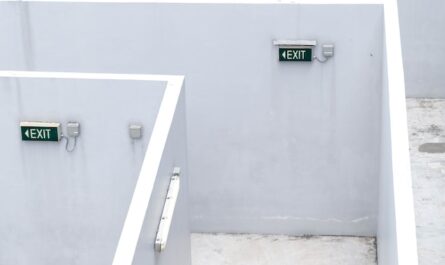Essays have shifted from societal musings, reasonings, and reflections, to increasingly personal accounts of how an experience affects the individual writer. This was not always the case, an inward focus meant to be consumed by and for the public. It was only within the past century the essay began to abandon the outward claims and actions of a culture, beginning to focus rather inwardly.
Today we will look at essays from two influential mid-century writers whose writing is at first glance a travel piece, but whose reflections reveal much more significant observations. We will compare E. B. White’s 1941 essay written in the Florida Keys, for The New Yorker, with Joan Didion’s 1966 report from Hawaii, which was first published in The Saturday Evening Post*. Reading both pieces together demonstrates how necessary such essays are, as they reflect back the society of the time, and show posterity how slowly progress actually takes place. We need talented, perceptive writers to capture the feeling in the air, which remains otherwise unarticulated and unaddressed.
White in Florida
In what starts as a light travel piece detailing his accommodations and the weather, White goes on to describe aspects of the culture in the South at the time. In a seemingly benign introduction, “On a Florida Key,” talks about the tap water being undrinkable, necessitating water to be delivered to the beach cottage guests for cooking and drinking. The vines and wild flowers, the cobblestone street surroundings are striking to look at, but do such details really matter if one can’t drink the water? This detail of a beautiful but inhospitable environment serves as foreshadowing the beautiful vistas and claims, yet inhospitable culture of the Sunshine State.
White’s visit to Florida takes place in 1941, eighty years after the Civil War, and ten months before the US entered the second World War. The South is still in the height of segregation. White clearly and unflinchingly describes the irony of a people who so proudly declare their own freedom – flags posted conspicuously around town, the Pledge of Allegiance splayed across the screens of movie theaters – yet deny freedom to people from a specific demographic. He contemplates the disparity of too many people thinking “liberty and justice for all means liberty and justice for themselves and their friends.” White’s words are characteristically clear and true, of course. I was happily surprised by how strongly he stated his disapproval of this fraudulence, to use his term, as most of White’s essays are pleasant ruminations and reflections on life in the woods or growing up. Yet, he uses his gift to brazenly call out the hypocrisy of touting “freedom for all” while the same folks insist Blacks sit on the balcony or are barred entirely from entry. Elsewhere, White has written it is a writer’s purpose to tell the truth as plainly as possible. This essay is a prime example of writing with such purpose.
Didion in Hawaii
Didion’s visit to Hawaii comes more than twenty years after the bombing of Pearl Harbor, to see the ways in which war haunts the island. Her primary concern is Hawaii’s remembrance of the war and how those memories impact the locals and those passing through, even as the country is embroiled in another war at the time. She describes war as the defining mood of the Hawaiian islands. We are given descriptions of how tourists in floral shirts with Kodaks dangling from their necks conduct themselves in hotel bars and on tourist boats near the sunken Arizona. War hangs over her visit to the National Memorial Cemetery of the Pacific, located on a crater overlooking Honolulu, where U.S. servicemen are buried. First used as a final resting place for those killed during the Pearl Harbor attack, it is now where those killed serving in the then-current Vietnam War are buried on the island. War hangs over the young servicemen spending their time and money trying to forget the war for an evening. War hangs in the memories of those who were there the day the harbor was attacked. In Hawaii, Didion writes, war means change and change means immigration.
Instead of commenting only on the scenery, though, Didion likewise underscores the reality of racism, here against Chinese immigrants. While Hawaii bills itself as a modern mix of peoples, Didion’s conversations with the locals about local schools and events reveal a different reality. Even here on a chain of islands in the Pacific, racism has managed to make an appearance, revealed in the demographics of the best schools on the island, in the remarks of those taking care to provide access to the “best” families. While the locals speak around such tension, Didion highlights the reality.
At the most basic level, both essays are accounts of each writer’s visit to a tropical vacation locale, and both dive deeper into social wrongs. Both describe the plants, the weather, and the other people they find around them. Both draw on memories of these spots to illustrate key points. White assures us of his love for Florida’s historic streets; likewise, Didion describes to us her childhood recollections of the Hawaii where her father was stationed during the first World War. Both involve a writer holding an opinion significantly different from that of the locals, interacting with those locals, and leaving the reader to contemplate where they stand themselves. As we learn, sadly, the attitudes in a segregated Florida are not so different from those expressed in Hawaii as she encounters new nationalities arriving on her coasts.
Both essays address the pettiness of humans, highlighting just how reliably we discover reasons for division. In unique ways, they are both discussions of the aftermath of war. We spend years and countless lives fighting wars, only to find yet more incompatible differences, and quickly go to war yet again. We are quick to defend our own rights, but slow when it comes to “others.” We are quick to forget history, discounting it far before we can learn from it. Each essay deals with a casual and socially accepted form of racism, shining a light on the inaccuracies between what we claim to believe and what our actions reveal to be true.
While it is a luxury to have legacy media seek out and write about these topics, it’s not as though these attitudes were well-kept secrets. The benefit of employing a writer is the reach their eloquent language and thoughtful framing of the problem can have; both are experts at bringing to the forefront what is more comfortably left in the background. Each writer presents a mirror for the reader. Each demonstrates the power of the individual’s thoughts, observations, and reflections. It’s not only for the writers and reporters to think, though; it is the birthright and responsibility of each of us.
While one can find any number of differences in the details – White uses humor and audacity throughout, while Didion prefers to inject her own cool reflections and reactions into her work – the significance of these essays lies in what they teach us about ourselves. Both writers reflect the reality of American culture back to Americans. In both pieces, we see actions which are sadly distant from the stated ideals and intentions of the “land of the free.” We are able to see progress made over the last, twenty, sixty, eighty years, as well as where we’d like to be. We’re reminded how high a bar is set, and that there is still work require to do to honestly live up to it.
*Didion’s Letter from Paradise 21 19’ N, 157* 52’ W, originally published in The Saturday Evening Post, under the title, “Hawaii: Taps Over Pearl Harbor”, 1966.
Photo by Philippe Gauthier on Unsplash




